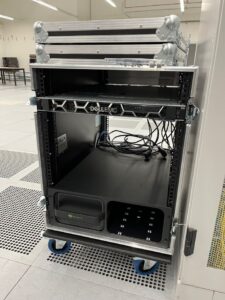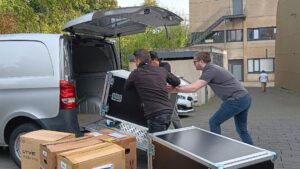
Source: Pixabay
On October 10, the time had come: The data cab visited Siegen .
But what is “onboarding” anyway? And what is the data cab?
As part of the Datensicherung.NRW (Dasi.NRW) project, there are currently three service provider (DL) universities where a Commvault backup infrastructure has been set up and where, in addition to their own backups, the data of other connected NRW universities (so-called “service users” (DN)) is also stored. The three service providers include the University of Bielefeld, the University of Duisburg-Essen and the RWTH Aachen.
If a NRW university now wants to participate in the project for the first time and have its data backup carried out by one of these service providers, this process is called “onboarding”.
How does the onboarding process work?
Interested universities usually first contact the Dasi.NRW project management, followed by an initial meeting to get to know each other in order to match the university’s data protection requirements with the Dasi.NRW service offering and to clarify the contractual requirements.
In a joint meeting between the DL and DN universities, the technical and on-site conditions are then recorded. If it turns out that the network connection is not sufficient for the first initial backup (full backup), the so-called “data cab” can be used.
This is a service in which the initial amount of data to be backed up by the service provider university is stored on a mobile storage system. This storage system is then driven by car (“cab”) to the service provider university, where it is incorporated into its backup infrastructure.
This service is offered in cooperation with the company Seagate Lyve, which provides the storage systems and takes care of the transport of the systems between the participating universities.
This process is supported by the backup admins of the participating universities and a consultant from Commvault.
Onboarding completed – The University of Siegen is on board
Such an onboarding to the RWTH backup system is currently in progress with the University of Siegen, which wants to become a new service university with us.
Several coordination meetings have already taken place and on October 10th the data cab drove to Siegen to configure the storage systems there and to integrate them into the network of the University of Siegen. Afterwards, the initial backup data of the University of Siegen was saved on this storage.
At the same time, preparations were made at RWTH for the connection to the RWTH backup system. Once the storage system is filled, the “cab” continues to Aachen in order to import the data into our backup system.
The following data backups, which are incremental, then come via the DFN network and the University of Siegen is finally “onboarded”.
Responsible for the content of this article is Dörte Rosendahl.






